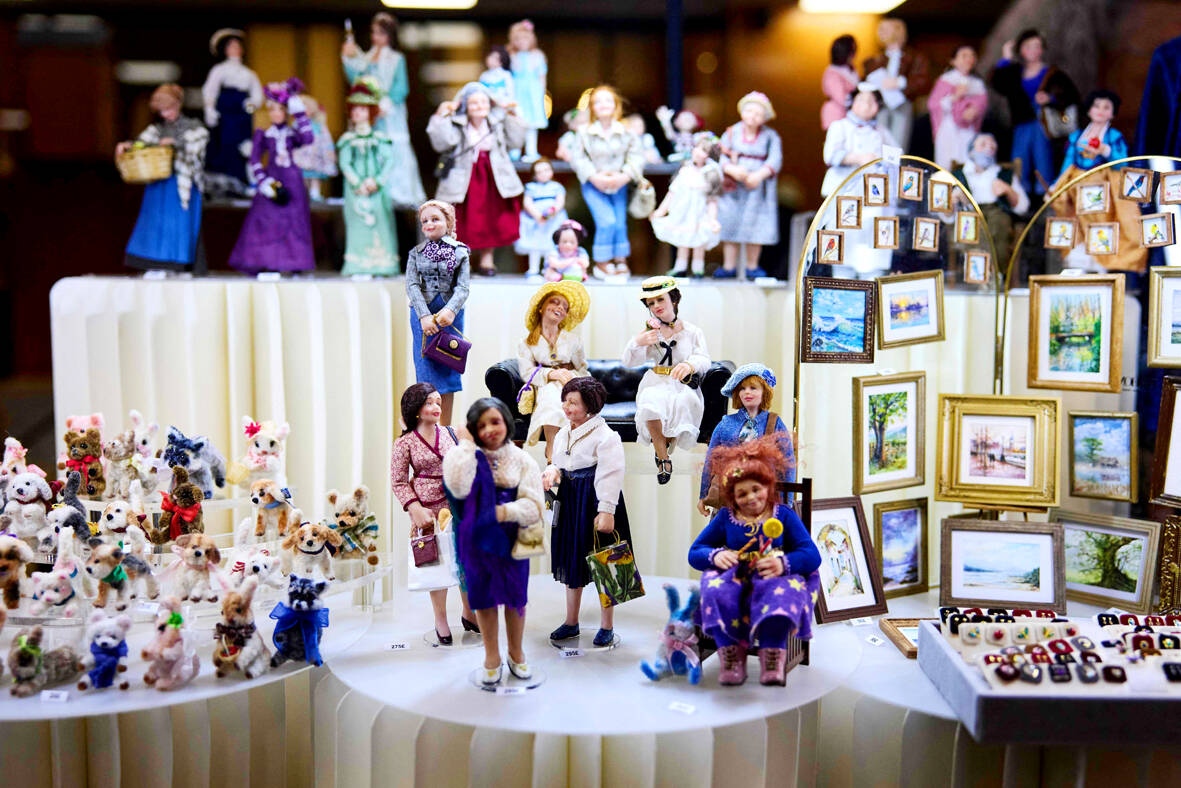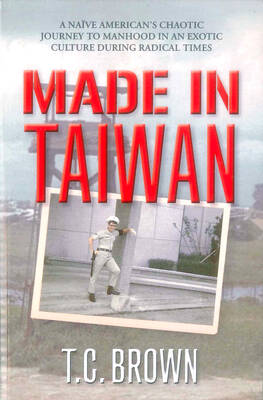A log burns in the hearth in the artfully lit drawing room. The armchairs look plush and inviting. Glasses and a bottle of wine stand ready as a grandfather clock keeps time. It is all straight out of a glossy magazine and yet every carefully crafted item in the room could fit into the palm of one hand.
“I love Victorian (19th century) houses and always wanted to live in one but it never happened,” laughed doll house enthusiast Michele Simmons, admiring the cozy miniature scene by historical specialists Mulvany & Rogers.
The 57-year-old corporate recruiter revived her childhood passion for doll houses during the pandemic and has since “flipped” about 10, buying them, doing them up and selling them on.

Photo: AFP
She and her daughter thought nothing of flying all night from Boston in the US to hunt for tiny curtains and a child’s crib at the leading Kensington Dollshouse festival in London.
“I love it! You don’t think about anything else when you are doing this,” she said, admitting she often had to be dragged out of her work shed to feed her children as she became so absorbed.
EXQUISITE MINIATURES
The annual festival has been gathering some of the world’s finest miniature craftspeople since 1985, celebrating a hobby that has seen rising interest recently and a mushrooming of online activity. It showcases tiny versions of anything needed to furnish a house, from chandeliers and paintings to mahogany dining tables and kitchen items, all with steep price tags.
Doll houses may be traditionally associated with children, but this high-end miniature collecting is very much an adult hobby.
“This is craftspeople working on just exquisite things,” said self-confessed “tiny-obsessed” Rachel Collings, who bought toys from renowned miniaturists Laurence & Angela St. Leger.
Every single one of her purchases, which cost at least US$53, fits easily into a small plastic container and will be added to her collection of equally small items.
“I’ve got half a cut lemon. Just imagine the size of that. A lemon squeezer and a pastry brush and a hand whisk that actually works,” said the 47-year-old editor.
“It’s an inner child thing. These things are just so beautiful.”
Doll houses originated from Europe in the 1500s when they were used to display the miniature possessions of the wealthy.
Just as at the London festival, these so-called “baby houses” were strictly for adults, not children.
Retired midwife Susan Evans, 67, on her annual pilgrimage from Colwyn Bay in north Wales, does not just have one doll house.
“I have a whole village,” she said. “It’s got 18 Victorian shops, a school, a manor house, a pub and now a church,” she said.
Initially the hobby was just a stress-buster to help her unwind, but she has now raised thousands of pounds hosting groups to visit the display in her home.
“It’s my passion. It’s escapism and it’s about using your imagination, which I think is very good for your mental health,” she said.
“IN CONTROL”
Kensington Dollshouse organizer Charlotte Stokoe said there was currently huge interest in doll houses and miniatures compared to before the pandemic.
“When the world itself is going a bit crazy with so much stress in everyone’s lives, it’s quite relaxing. You are in control,” she said, adding that many people had delighted in pulling out old doll’s houses during the COVID lockdowns.
And at a time of rising costs, she said, people had “discovered they can do interior design that maybe they can’t do with their own homes — in small scale it’s so much more doable.”
Medical anthropologist Dalia Iskander of University College London (UCL) has spent three years researching the subject for her forthcoming book Miniature Antidotes.
“For many people it’s a way of exploring their own experiences and memories and imagination and incorporating that into these miniature worlds,” she said.
A whole range of medical issues such as depression or anxiety could all be explored through miniatures in a “beneficial” way, she added.
Miniatures enthusiast Collings said the hobby had become such a source of happiness that her 12-year-old daughter also got involved. She urged anyone to give it a try.
“When everything is difficult, there are these tiny things,” she said.
“Sometimes I just go and sit and look at them and it just makes me happy.”

Aug. 25 to Aug. 31 Although Mr. Lin (林) had been married to his Japanese wife for a decade, their union was never legally recognized — and even their daughter was officially deemed illegitimate. During the first half of Japanese rule in Taiwan, only marriages between Japanese men and Taiwanese women were valid, unless the Taiwanese husband formally joined a Japanese household. In 1920, Lin took his frustrations directly to the Ministry of Home Affairs: “Since Japan took possession of Taiwan, we have obeyed the government’s directives and committed ourselves to breaking old Qing-era customs. Yet ... our marriages remain unrecognized,

During the Metal Ages, prior to the arrival of the Dutch and Chinese, a great shift took place in indigenous material culture. Glass and agate beads, introduced after 400BC, completely replaced Taiwanese nephrite (jade) as the ornamental materials of choice, anthropologist Liu Jiun-Yu (劉俊昱) of the University of Washington wrote in a 2023 article. He added of the island’s modern indigenous peoples: “They are the descendants of prehistoric Formosans but have no nephrite-using cultures.” Moderns squint at that dynamic era of trade and cultural change through the mutually supporting lenses of later settler-colonialism and imperial power, which treated the indigenous as

An attempt to promote friendship between Japan and countries in Africa has transformed into a xenophobic row about migration after inaccurate media reports suggested the scheme would lead to a “flood of immigrants.” The controversy erupted after the Japan International Cooperation Agency, or JICA, said this month it had designated four Japanese cities as “Africa hometowns” for partner countries in Africa: Mozambique, Nigeria, Ghana and Tanzania. The program, announced at the end of an international conference on African development in Yokohama, will involve personnel exchanges and events to foster closer ties between the four regional Japanese cities — Imabari, Kisarazu, Sanjo and

By 1971, heroin and opium use among US troops fighting in Vietnam had reached epidemic proportions, with 42 percent of American servicemen saying they’d tried opioids at least once and around 20 percent claiming some level of addiction, according to the US Department of Defense. Though heroin use by US troops has been little discussed in the context of Taiwan, these and other drugs — produced in part by rogue Chinese Nationalist Party (KMT) armies then in Thailand and Myanmar — also spread to US military bases on the island, where soldiers were often stoned or high. American military policeman